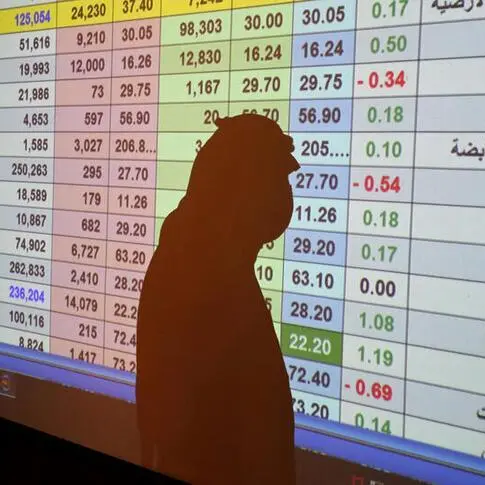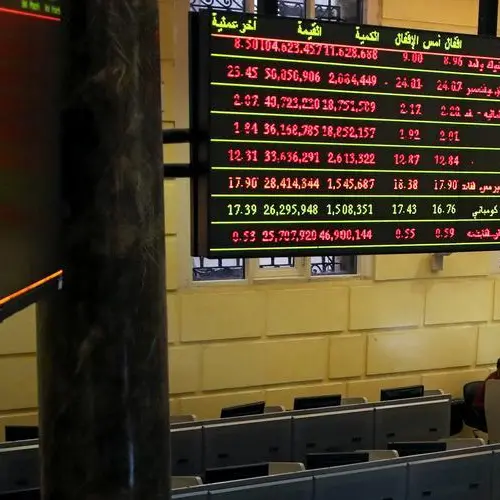PHOTO
The oil and gas sector has started the year “on a steady footing” but prices are likely to remain volatile, with the big determining factor set to be how disciplined producers are in sticking to cuts agreed at the recent Opec meeting late last month, the ratings agency Moody’s said in its annual report on the industry. (Read the full Moody's report here).
"Market expectations for continued strong oil demand growth remain in place, despite concerns about slowing demand growth as a result of weaker economic growth, the impact of tariffs and a strong U.S. dollar," Steve Wood, Moody's managing director for oil and gas, said in a press release issued with the report on Thursday.
"Very high Saudi and Russian production, in particular, has heightened supply volatility, so whether OPEC and Russia maintain production discipline and renew agreements to limit output are key concerns going into the new year," Wood added.
The price of oil fell more than 40 percent in the fourth quarter of 2018, but has seen some recovery since the start of the year.
Oil rose nearly 2 percent on Friday on hopes that proposed trade talks between the United States and China would ease fears of an impending global economic slowdown.
Brent crude futures rose $1.11, a 1.98 percent gain, to settle at $57.06 a barrel. U.S. West Texas Intermediate (WTI) crude futures increased 87 cents to settle at $47.96 a barrel, a 1.85 percent gain. Overall, Brent has increased about 9.3 percent last week, while WTI is up about 5.8 percent.
The Organization of the Petroleum Exporting Countries (Opec), Russia and other non-members agreed in December to reduce supply by 1.2 million barrels per day (bpd) in 2019. OPEC's share of that cut is 800,000 bpd. A Reuters survey on Thursday found OPEC supply fell by 460,000 bpd in December.
Data published on Thursday from Refinitiv Eikon and market intelligence firm Kpler also showed that Opec crude cargoes headed towards the U.S. in December dropped to the lowest level in at least five years.
Despite the positive data, some analysts were sceptical as to how relevant this was to the overall picture. "Some of it was a decline in OPEC production," Andy Lipow, president of Lipow Oil Associates in Houston, told Reuters. "But they're facing competition from U.S. shale and Canadian production."
However, others were optimistic that Opec members were going to stick to the production cut agreements. "The Saudis are still spearheading a significant production cut that became official this week. Thus far, strong adherence to adjusted quotas appears a high probability," Jim Ritterbusch, president of Ritterbusch and Associates, said in a note published by Reuters.
Two factors that are likely to impact supply are Iran and Iraq. Iraqi Oil Minister Thamer Ghadhban said in a statement on Friday that he had directed oil officials to take urgent measures to comply with the cuts.
"(The minister) reaffirmed the ministry's commitment to keep national oil production at an average of 4.513 million bpd in the next six months," the statement added, according to a report by Reuters.
On the other hand, Iran said on Saturday that while countries that had been issued a waiver to continue buying some Iranian oil were reluctant to go above the limits imposed, it had found other buyers who were happy to go against Washington and sign up to take orders.
"China, India, Japan, South Korea and other countries that were granted waivers from America to import Iranian oil are not willing to buy even one barrel more from Iran," Amir Hossein Zamaninia, Iran’s deputy oil minister for trade and international affairs, was quoted as saying by the Oil Ministry's news agency SHANA, Reuters reported.
"Despite U.S. pressures on Iranian oil market, the number of potential buyers of Iranian oil has significantly increased due to a competitive market, greed and pursuit of more profit," he added, without giving details. (Read the full report here).
In its report, Moody’s said it predicts that, in the medium-term, WTI crude prices will be $50-$70/bbl. Below is a summary of some the key findings in the Moody’s annual report:
• While commodity prices are improving and higher than in 2015/16, investors in exploration and production companies will be hoping for better returns in 2019, Moody's said.
• In the oilfield services sector, earnings are set to increase by 10 to 15 percent, Moody’s said, but these are still at the lower end of the scale and any recovery won’t be until the end of 2019.
• At the same time, Moody’s predicts that refiners' distillate margins won’t start to improve until at least the second half of next year.
• Moody’s predicts that natural gas demand is likely to increase, mainly on the back of growing demand from US Gulf Coast petrochemical plants and the growth in the number of gas-fired power stations. However, the report said increased supplies of natural gas from shale could dilute any demand spike, unless there is an unexpectedly severe winter weather snap later in the year. Moody’s predicts that North American natural gas prices will stay within $2.50-$3.50/MMBtu [million British Thermal Units - the measurement used in the gas industry] band through 2020.
(Read the full Moody's report here).
Further reading:
• Oil bulls charge back as new year starts
• Iran says despite U.S. sanctions it has found new potential oil buyers
• Oil rises on China-U.S. talks, gains capped by U.S. fuel build
• Iraq says committed to OPEC oil output reduction
• OPEC oil output posts biggest drop since 2017 on Saudi move
• Oil prices decline on swelling oversupply, volatile markets
(Writing by Shane McGinley; Editing by Michael Fahy)
(shane.mcginley@refinitiv.com)
Our Standards: The Thomson Reuters Trust Principles
Disclaimer: This article is provided for informational purposes only. The content does not provide tax, legal or investment advice or opinion regarding the suitability, value or profitability of any particular security, portfolio or investment strategy. Read our full disclaimer policy here.
© ZAWYA 2019












